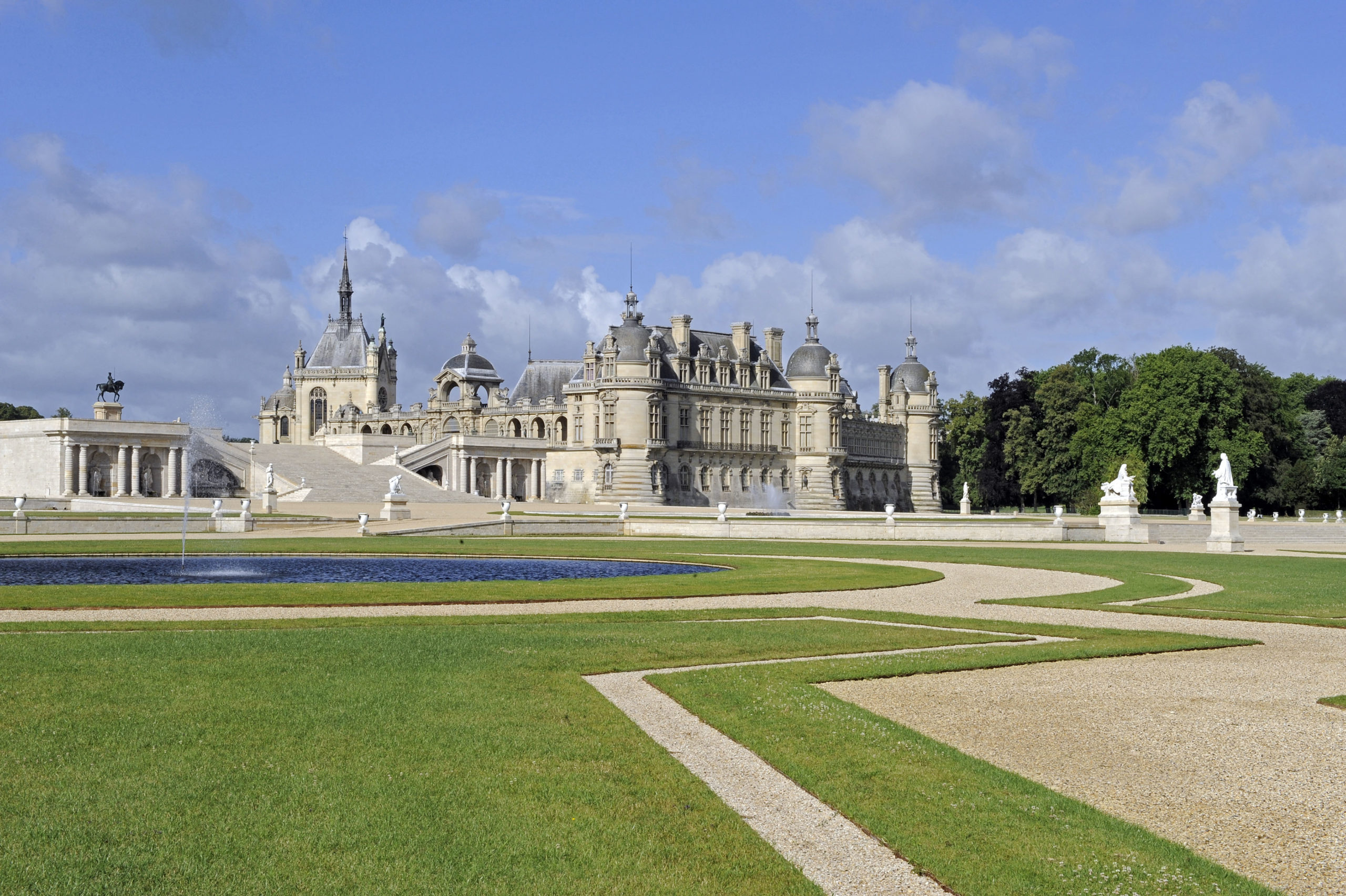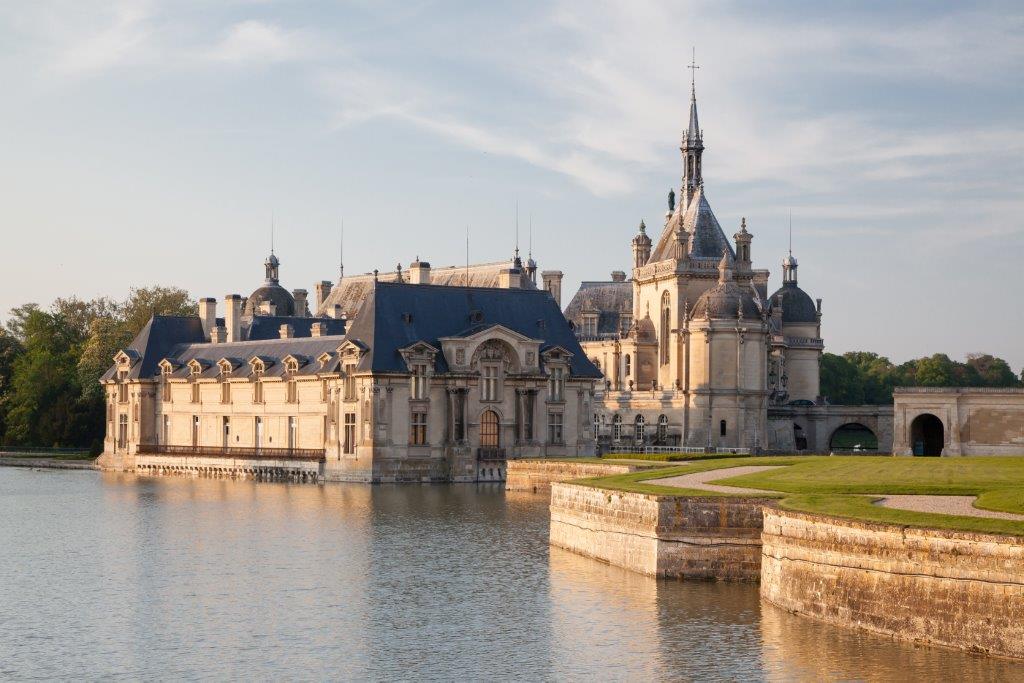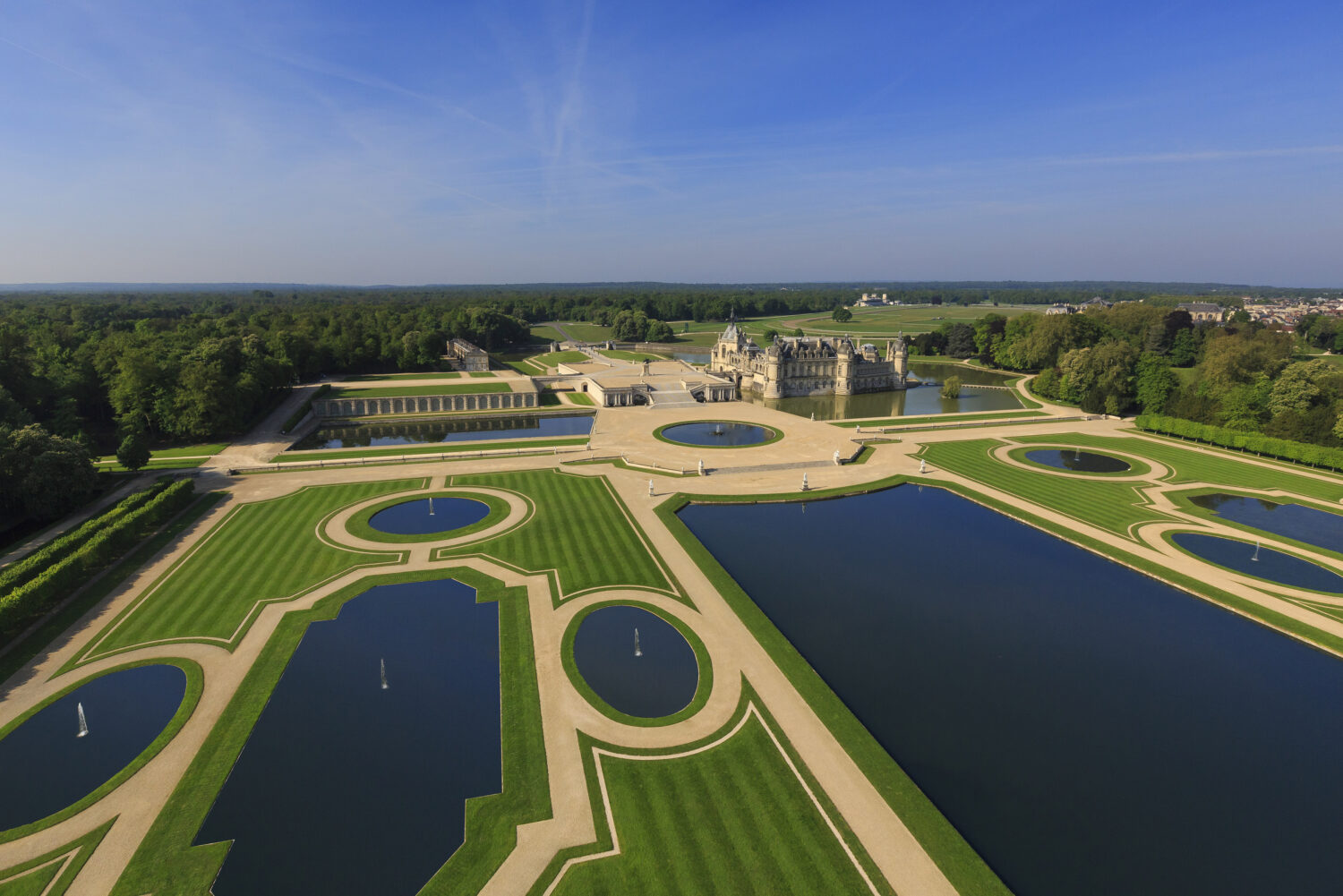Le Nôtre’s favourite gardens
The large French-style landscaped garden in Chantilly provides the most stunning viewpoints of the visit. It includes immense mirrors of water reflecting the sky, numerous fountains and water features, and an exceptional collection of statues. Of all the gardens created by André Le Nôtre, those of Chantilly were his favourite, as he wrote in 1698 to the Count of Portland: “Remember all the beautiful gardens in France, Versailles, Fontainebleau, Vaux-le-Vicomte, the Tuileries and especially Chantilly”.
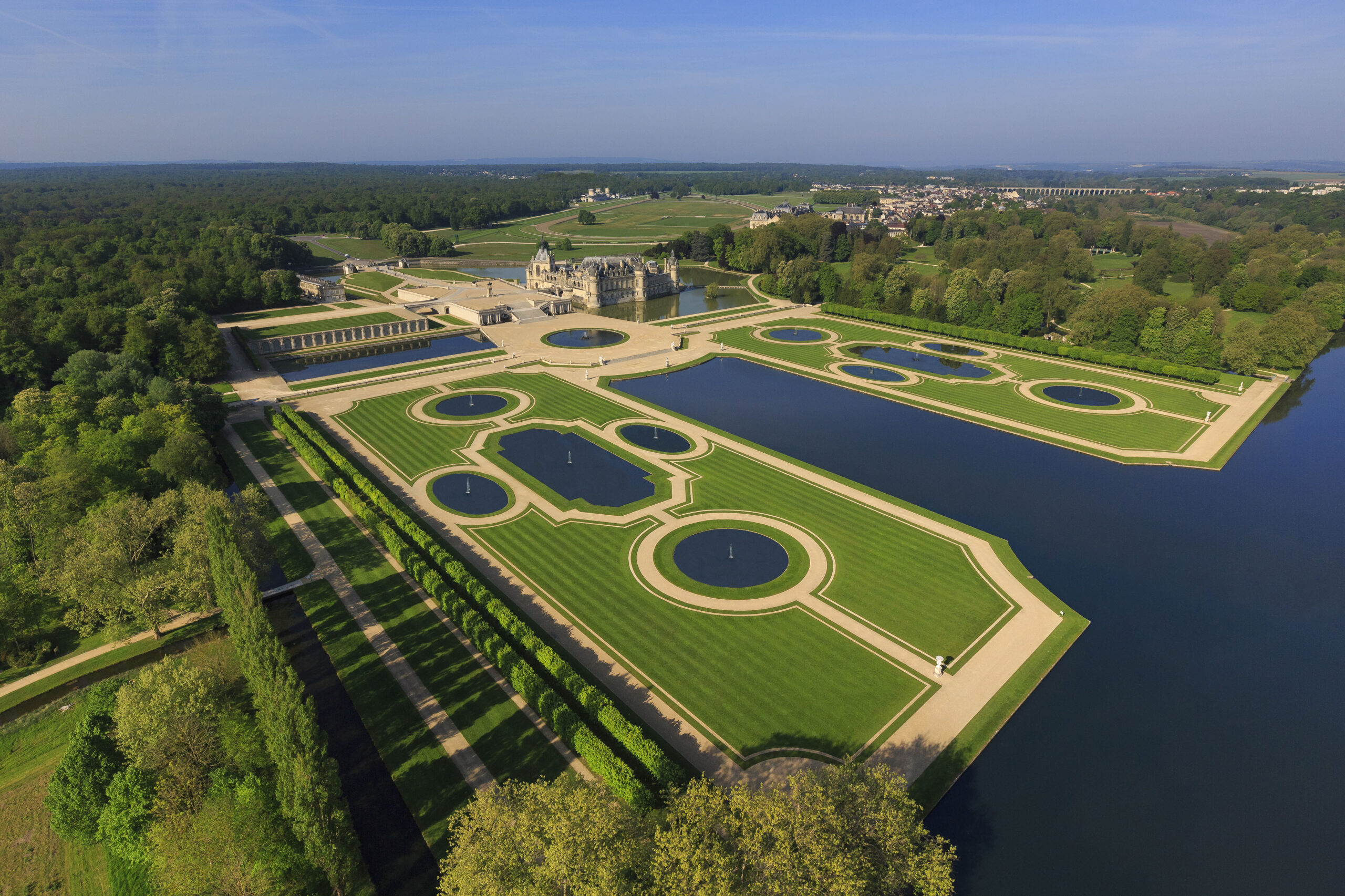
Designed with sumptuous balance and harmony
Designed during the second half of the 17th century by André Le Nôtre, the future gardener of Versailles, for Louis II de Bourbon, Prince of Condé, better known as the Great Condé, the French-style garden in Chantilly is a rare example of a layout with an axis that is off-centre in relation to the château.
The greatest number of water features
Of all the gardens designed by Le Nôtre in the 17th century, Chantilly is undeniably the one with the largest ponds and the greatest number of water features.
Its complete restoration in 2009 made it possible, while fully complying with traditional techniques, to rediscover the full extent of the ingenuity of the water-supply network, considered a major feat in its time and thanks to which the fountain sprays can measure up to five metres in height.
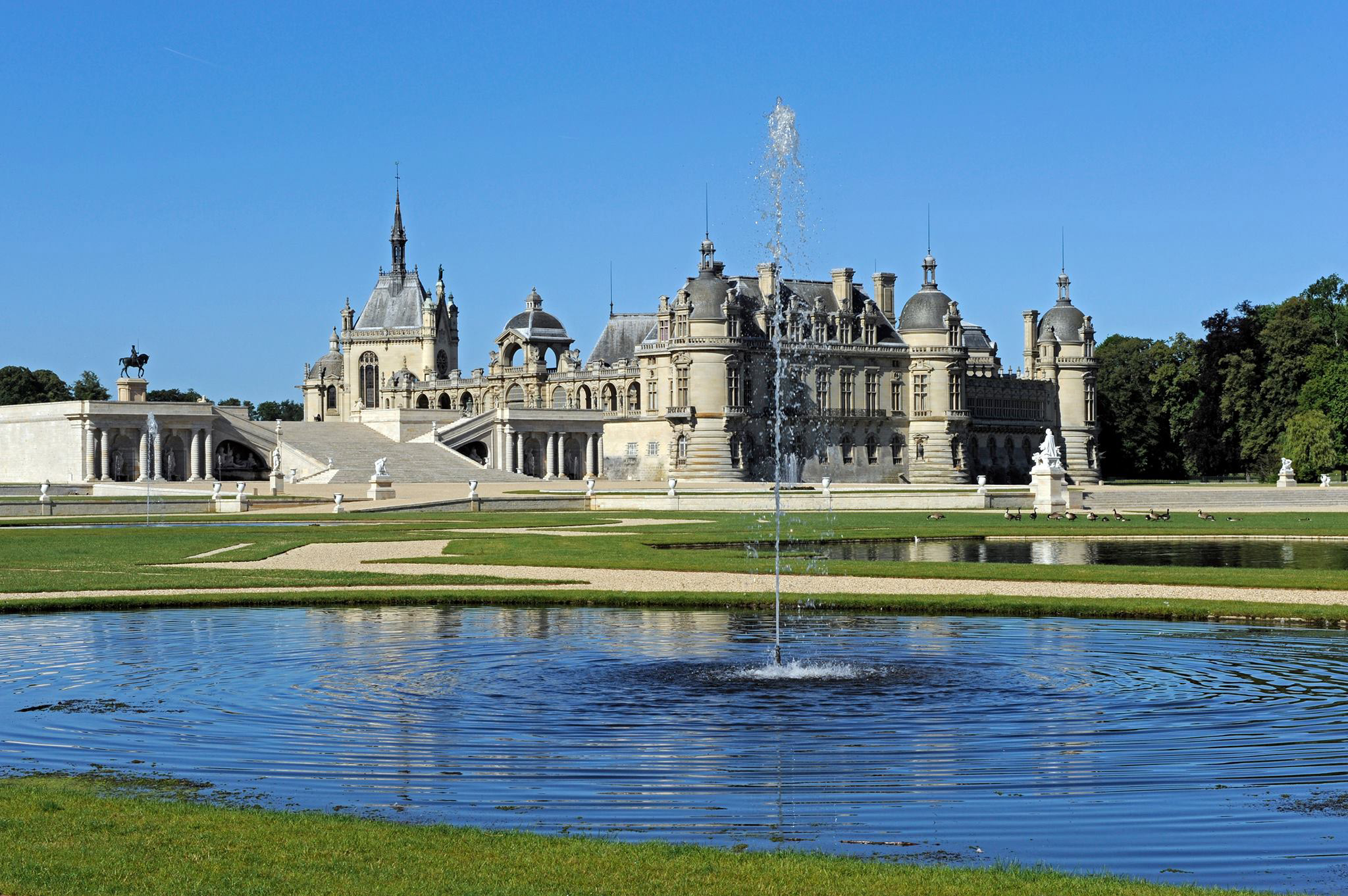
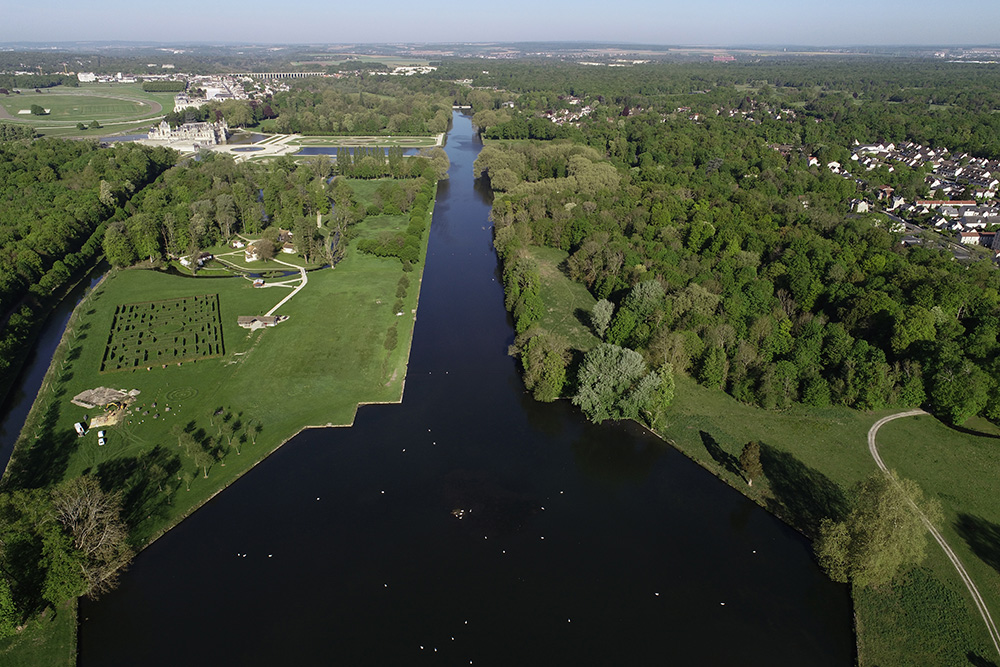
The Grand Canal, a monumental creation
The Grand Canal, which is 2.5 km long and longer by 600 metres than that of Versailles, was created via a diversion of the Nonette, a tributary of the river Oise channelled by Le Nôtre. This monumental creation, which already intended to compete with the Château de Versailles, was a great source of pride for the gardener.
The characteristics of the French-style garden
The French-style garden is distinct in its geometric layout, which is often symmetrical, made up of flowerbeds, groves and ponds, dotted with statues and animated by enchanting water features.
The French-style garden symbolises the triumph of order over disorder, of culture over the wilderness, of reflection over spontaneity. It is characterised by a theatrical staging of the garden, the aim being to surprise the visitor with a play on perspective.
